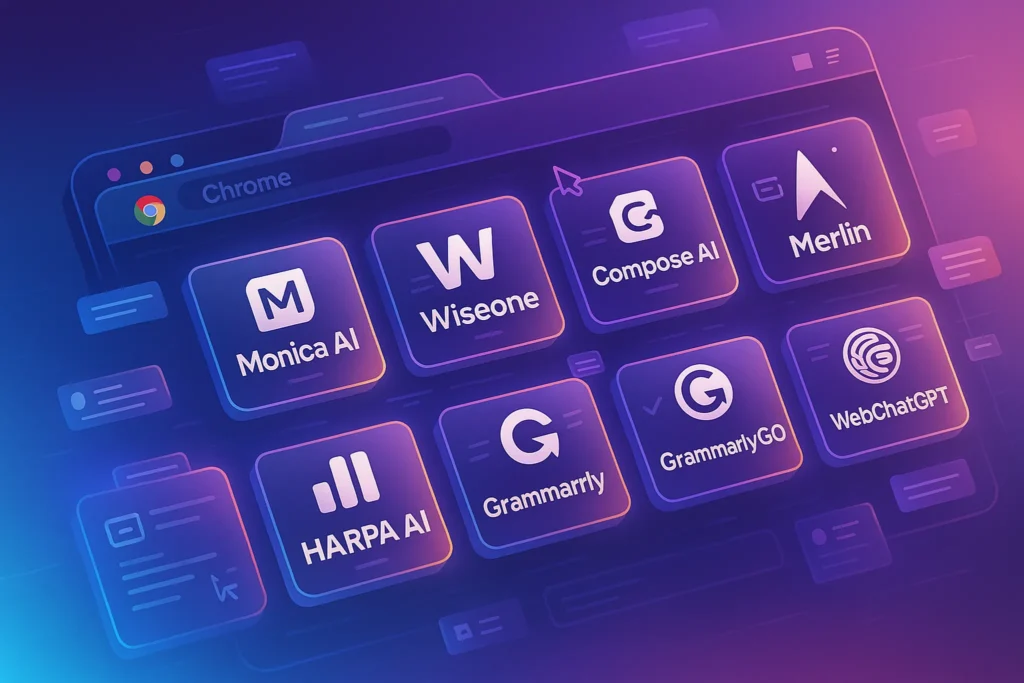-This post may contain affiliate links. If you click on one and make a purchase, I may earn a small commission at no extra cost to you.-
🤯 Introduction: Brainstorming Isn’t Broken—But It’s Due for an Upgrade
Brainstorming remotely is hard. Between awkward silences on Zoom, one person hogging the mic, and random ideas scattered across tools, creativity often takes a hit. Remote teams struggle to replicate the dynamic energy of in-person sessions. But what if AI could bridge that gap?
In 2025, AI tools are stepping into the creative process—not to replace humans—but to enhance ideation, structure chaos, and spark new thinking.
This isn’t about replacing sticky notes. It’s about unlocking better ideas, faster.
In this guide, you’ll discover 5 AI-powered tools that supercharge remote brainstorming. Whether you’re a product manager, team lead, or solopreneur, these platforms help you:
-
Capture scattered ideas into structured maps
-
Generate creative prompts based on your goals
-
Facilitate real-time collaboration across time zones
Let’s get into it. 💡
🧰 1. Miro AI – 🏆 Best All-in-One Brainstorming Companion
Miro is already a top remote whiteboard tool—but Miro AI adds next-level creativity with its auto-brainstorming and diagram generation tools.
Why It Matters:
Remote brainstorming often starts with scattered ideas—sticky notes, chat threads, and vague outlines. Miro AI turns chaos into structure by auto-generating mind maps, diagrams, and idea prompts linked to your session’s theme.
Real Use Case:
A product team meeting on feature innovation: the facilitator inputs “AI-driven search features,” and Miro AI automatically builds a branching mind map with UX, integrations, KPIs, and possible drawbacks.
Practical Scenario:
-
Host a 30-minute brainstorming call on Zoom.
-
Miro AI populates initial diagram; your team iterates live.
-
Afterward, the tool exports a clear, organized concept board to Slack.
Integration Tip:
Use Miro after automation meetings: incorporate your brainstorming into collaborative execution with tools covered in Best AI Tools for Remote Team Collaboration.
🔹 Key Use Cases:
-
Generate mind maps from a single prompt
-
Get idea suggestions based on keywords
-
Turn bullet points into visual workflows
✅ Pros:
-
Real-time collaboration with teams
-
Integrates with Zoom, Notion, Slack
-
Saves time with prebuilt AI frameworks
❌ Cons:
-
May be overwhelming for solo users
-
AI suggestions sometimes generic
🧪 Why It Works:
It helps break creative blocks by offering jumpstart prompts—ideal for fast-paced remote sessions.
🔗 Try Miro AI →
🎨 2. Whimsical AI – ✨ Best for Visual Creators
Whimsical blends flowcharts, wireframes, and sticky notes with smart AI that generates concepts visually.
Why It Matters:
Conceptual thinking thrives on visual clarity. Whimsical AI transforms bullet points into polished flowcharts, wireframes, and diagrams within seconds.
Real Use Case:
A startup ideating a user journey map: input “sign-up flow with referral program + AI onboarding” and Whimsical AI outputs a multi-stage visual flow complete with decision points and user inputs.
Practical Scenario:
-
Kick off a concept session and drop main topics into a shared Whimsical board.
-
AI suggests layouts—team members add context.
-
Present directly in tools like Zoom or Notion without switching screens.
Why It Works:
Visual learning fosters clarity—and AI cuts layout setup. Great for mixed-mode remote meetings.
Natural Link:
After brainstorming, keep momentum by importing outputs into your note‑automation workflow—check How to Automate Meeting Notes with AI.
🔹 Key Use Cases:
-
Visual thinkers who need diagrams fast
-
Product and UX teams
-
Startup pitch development
✅ Pros:
-
Clean interface for rapid visuals
-
AI turns concepts into structured layouts
-
Keyboard shortcuts save time
❌ Cons:
-
Limited customization on lower tiers
-
Needs strong internet for sync
🧪 Why It Works:
It translates text into usable visuals—great for teams who ideate visually before diving into text.
🔗 Try Whimsical AI →
✏️ 3. FigJam AI – 🖌️ Best UX Experience
From the makers of Figma, FigJam AI is a whiteboarding tool that’s intuitive, fast, and creative.
Why It Matters:
For design-first teams, FigJam AI offers an intuitive, fast whiteboard where ideas become sticky notes instantly—without worrying about formatting.
Real Use Case:
UX teams use FigJam AI during sprint planning: type “User flow for checkout with upsell,” and AI spins out 8–10 sticky note ideas and suggestions in under a minute.
Practical Scenario:
-
Hold a remote planning session.
-
Team types prompts; AI populates with actionables—simplify collaboration.
-
Export notes into FigJam or Figma for design handoff.
Why It Works:
No fiddling—just ideate. The integration with Figma means your teams can prototype faster.
🔹 Key Use Cases:
-
Product teams brainstorming new features
-
Solo entrepreneurs planning roadmaps
-
Agile retrospectives
✅ Pros:
-
Generates sticky notes from idea prompts
-
Light, fast interface
-
Seamless Figma integration
❌ Cons:
-
Less advanced than Miro in features
-
Team features locked behind paid plans
🧪 Why It Works:
You don’t have to think about formatting—just ideate. AI handles layout and structure.
🔗 Try FigJam AI →
🔄 4. Boardmix – 🎯 Best UI + Templates
Boardmix blends diagramming, brainstorming, and planning with AI tools tailored for team workflows.
Why It Matters:
Starting from a blank board can be intimidating. Boardmix removes friction with AI-powered brainstorming templates—fill-in-the-blank frameworks ready to go.
Real Use Case:
An HR team runs a session on virtual event planning: they choose the “Event Planning Template” and AI auto-creates key columns like “Objectives,” “Speakers,” “Tech Stack,” and “Budget.”
Practical Scenario:
-
Pick a template.
-
Feed the session topic.
-
Boardmix auto-populates structure—you fill content.
Why It Works:
When creativity stalls, structure helps you start faster—and AI does it for you.
🔹 Key Use Cases:
-
Team retrospectives
-
Weekly idea generation
-
Client workshops
✅ Pros:
-
Dozens of AI-powered templates
-
Automatic layout and flow suggestions
-
Multi-user support
❌ Cons:
-
Slightly newer in the market
-
Smaller integration ecosystem
🧪 Why It Works:
Boardmix removes friction—its AI sets up layouts and frameworks so you can jump straight into ideas.
🔗 Try Boardmix →
🎓 5. Mural AI – 🔍 Best for Remote Workshops
Mural is built for structured ideation, especially in corporate or enterprise settings.
Why It Matters:
Structuring participation in large groups is tough. Mural AI offers guided workshop flows where AI helps secure engagement and clarity.
Real Use Case:
A global team runs a remote strategy offsite: Mural AI structures polls, icebreaker flows, and sparse-to-deep brainstorming lanes. It then generates group categories based on the result.
Practical Scenario:
-
Host a 60-minute ideation drive.
-
AI moderates: suggests small-group breakout, then consolidates ideas with “smart clustering.”
-
Output delivers usable strategic asset, exportable to slide decks or Notion.
Why It Works:
It delivers structure and rigor—great for corporate or stakeholder-heavy sessions.
Note:
Use this post-meeting in conjunction with your automated note process for summarizing outcomes efficiently.
🔹 Key Use Cases:
-
Facilitated brainstorming sessions
-
Strategy meetings
-
Creative sprints
✅ Pros:
-
Group ideation with AI prompts
-
Smart clusters for similar ideas
-
Workshop planning tools
❌ Cons:
-
No free tier
-
Learning curve for new users
🧪 Why It Works:
Its AI brings structure to chaos—perfect for multi-person ideation where clarity matters.
🔗 Try Mural AI →
🧠 Quick Comparison Table
| Tool | Best For | AI Features | Pricing | Free Plan | Verdict |
|---|---|---|---|---|---|
| Miro AI | Team collaboration | Auto-mind maps, idea prompts | From $10/mo | ✅ | Best All-in-One |
| Whimsical AI | Design + brainstorming | Flowchart AI, visual prompts | From $12/mo | ✅ | Best for Visuals |
| FigJam AI | Designers & PMs | AI-generated sticky notes | From $8/mo | ✅ | Best UX Experience |
| Boardmix | Workflow ideation | AI templates, smart layouts | From $7/mo | ✅ | Best UI + Templates |
| Mural AI | Remote workshops | AI group ideation + suggestions | From $12/mo | ❌ | Best for Workshops |
🧾 Final Comparison Summary
If you’re wondering which tool fits best, here’s our quick take:
-
Use Miro AI if you want an all-around brainstorming suite for structured teams.
-
Go with Whimsical for design-led teams who think in visuals.
-
FigJam AI is perfect if you’re already in the Figma ecosystem and want something fast.
-
Boardmix is great for plug-and-play templates that get the job done.
-
Mural AI shines in guided sessions and enterprise workshops.
❓ FAQ
What is the best AI brainstorming tool for remote teams?
Miro AI is the most well-rounded tool with templates, diagrams, and AI idea prompts tailored for team ideation.
Are there any free AI brainstorming apps?
Yes, Miro, FigJam, and Boardmix offer free tiers with AI features available for basic usage.
Can AI tools replace creative brainstorming?
AI won’t replace human creativity but can enhance it by generating suggestions, organizing chaos, and reducing blank-page syndrome.
Can these tools replace human brainstorming?
No—AI amplifies creativity but doesn’t take the human spark. The tools structure, visualize, and jumpstart ideas—you add the nuance.
Which tool is easiest to start with?
FigJam AI is lightweight and intuitive—ideal for individuals or small teams. For bigger groups, try Miro or Mural.
Are they secure enough for enterprise use?
Yes—Miro, Mural, and FigJam offer SOC II compliance and team management features on paid plans.
🧠 Nerd Verdict
“These tools are more than digital whiteboards—they’re collaborative engines that scale your thinking. Great brainstorming doesn’t happen by accident. With AI, you get structure, speed, and sparks of unexpected brilliance.”
💬 Would You Bite?
Tell us: If you could script your next remote brainstorming—would you bite?
Would you let Miro generate the first mind map, or have FigJam create sticky notes while you focus on the content?
We’d love to hear your stories! 👇



